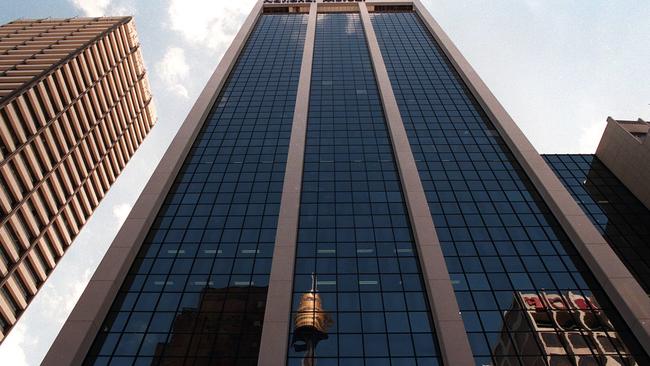Lower values in the commercial property market will hit superannuation fund returns

Much higher interest rates than a year ago, remote office working and lower discretionary spending have hurt ASX-listed property securities but have not yet led to a big hit to recorded commercial property values, as asset owners have opted to cancel sales rather than take big discounts.
“There’s been a real lack of transaction evidence in the market, that’s why parts of the market are getting a bit excited about this transaction,” MA Financial head of equity research Edward Day says.
“There have been several assets recently that have been pulled from the market,” he adds, as there is a “big gap between vendor expectations compared with what someone is willing to pay.”
On June 9, Dexus told the market it had sold its “grade A” building on 44 Market St for $393m – a 17.2 per cent discount to its December 2022 valuation which had been performed by an independent valuer.
A year earlier, the independent valuer had appraised the building at $507m, or 22.5 per cent more than the sale price.
Given it is the first major sale since the Reserve Bank last year started to increase interest rates in its battle to bring inflation down, the deal is providing a key window into what is to come for the commercial real estate sector.
“There’s no doubt that commercial office asset values are coming under pressure; it seems to be somewhere between 10 and 20 per cent but that really depends on the tenant covenant and the leasing profile of the building,” Day says.
And “for good quality office buildings with good tenant covenants – meaning no lease expiring and no vacancy – valuations are probably off somewhere between 5 and 10 per cent,” he says.
Higher interest rates mean higher funding costs and lower asset prices due to the higher discount used when calculating the present value of the expected cash flowing from those properties in the future.
The listed equity market is already factoring in the downside risk to valuations as workers in Australia refuse to go back to the office full time and interest rates continue to increase, which also hurts consumer spending.
Most Australian REITS with office exposure are trading somewhere between 25 and 45 per cent discounts to net tangible assets.
In fact, Day says, the market has probably “overshot on the downside relative to where we see direct market valuations”.
But unlike listed investors, who have copped price falls ever since interest rates began their rapid increase in May last year, the $3 trillion superannuation fund industry has not been as quick to update the valuations of their portfolios.
The delay has forced the The Australian Prudential Regulation Authority (APRA) to ramp up its scrutiny of the sector to ensure the values of their unlisted assets – including, but not only, property – are consistent with real values.
“Accurate valuations are vitally important for member equity,” APRA general manager of superannuation Katrina Ellis told a Senate economics hearing last month.
“When members are transacting … nobody wants stale valuations, so it’s an area that we’ve put new requirements out for. We’re doing targeted prudential engagements with trustees to examine their processes and to ensure that they’ve uplifted their practices.”
The average Australian worker invested in a MySuper fund has a direct exposure to property of about 8 per cent, most of which is through unlisted property, according to industry statistics. That includes office buildings, shopping centres, and other industrial sites such as warehouses.
AustralianSuper, whose overall exposure to property is lower than the average at about 5 per cent, last month told a conference that returns on the fund’s property portfolio had been “really disappointing”. So much so, the country’s largest super fund had stopped allocating new funds to the asset class.
Hostplus, one of the funds with the largest allocations to the property sector, this week said it was closing down its property stand-alone fund. It cited a regulatory requirement to design and distribute financial products that meet “the contemporary needs” of members as one of the reasons for the decision.
The $100bn fund said performance had not been a “key reason” to close the fund, adding that its overall exposure to commercial property was “very low”.
“General market commentary that movement in interest rates and the impact from work from home trends is going to have a significant impact on property valuations is not a true reflection of the current environment,” a spokesman for Hostplus said.
That was because Hostplus’ portfolios were highly diversified, he added.
Ian Patrick, chief investment officer of Australian Retirement Trust, the country’s second largest fund, told The Australian that unlike in the US market, in Australia a lack of actual transactions meant price discovery could become unreliable.
“There’s an absence of evidence – meaning concluded transactions – for valuers to respond to,” he said before the sale of the Market St building was announced.



The sale of a Sydney building at a double-digit discount could be a painful harbinger of commercial property corrections yet to come in Australia and, in turn, of an impending hit to the retirement savings of most workers.